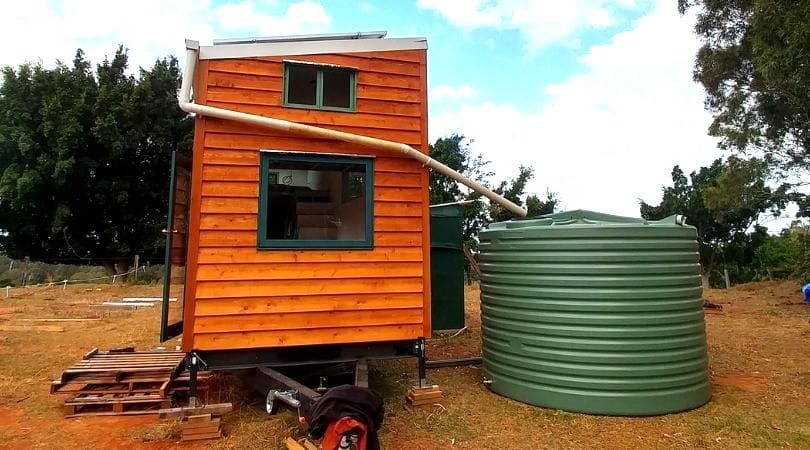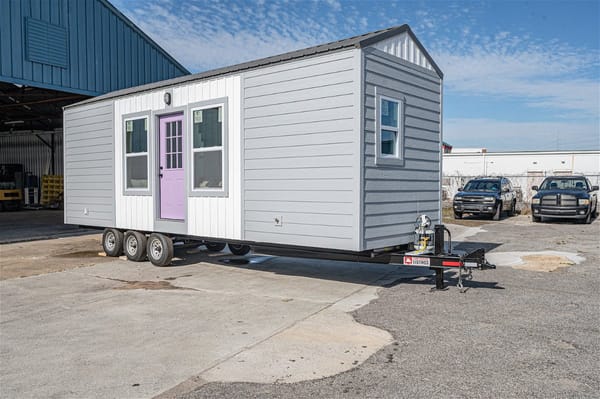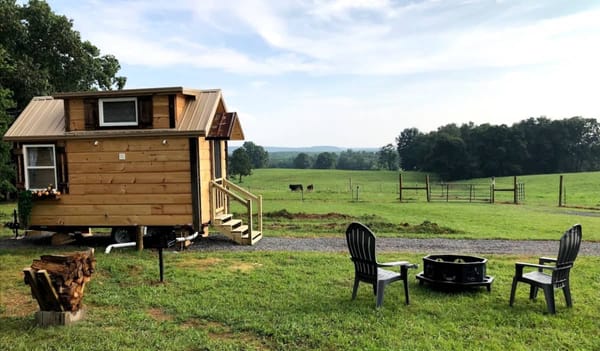How Do I Get Water For My Tiny House?

They say you can go without air for 3 minutes, water for 3 days and food for 30 days. It's a given that air comes standard with tiny houses (clean air is another matter). But water is far from a given.
The vast majority of tiny houses are fed water into the home home via a water hose. There are some tiny houses that are self-contained where a water hose fills a fresh water tank. The water tank is where the water pump draws from and pressurizes the home's water lines. Then of course, there are tiny houses that have both. In almost all instances, these are homes that are not fixed to the ground and are mobile.
Tiny houses on a permenent foundation are a different story and usually (certainly not always) have water fed into the house via PVC pipes or other similar materials normally used in traditional homes.
The above information illustrates how water is brought into the tiny house, but it doesn't address the source of the water. Where will this water come from? Here are a few options (sources) of water to show how you can bring water into your tiny house, depending on your situation.
Well
If you live in an area where it is permissble to dig a well to draw usable water from the ground, then installing a well may be a good idea for your tiny house water needs. Depending on your location, it may be necessary to dig extremely far down. This is normally the case in a mountainous areas. If you're at the top of the mountain, you'll need to dig through that mountain and then some to get to the water table. If you're in the desert, this can also be the case as the water table usually lies well below the surface. Normally the cost of having a company that digs a well is priced by the foot. If the ground is soft soil, then the price per foot is cheaper. If you are digging through rock and other hard materials, the price per foot naturally will be more expensive.
If you live in an area where getting to the water is realatively easy, then you might consider using an auger and well kit and digging it yourself.
Once you have the hole dug, you'll need a pump to siphon the water from the ground. Electric pumps traditionally do no pull alot of power since they are only used for seconds or minutes at a time. This means it's very possible that going off-grid and having a well and water pump supply your needed water.

Municipal Water
If you live in an area where water is provided by the local municipality, this is of course another option. This will normally come in two flavors. Either your tiny house is the main dwelling on the piece of property that it resides, or your house is a secondary home and you can borrow the infrastructure already in place from the primary home. This can be as simple as running a water hose from the main home to your tiny house.
RV Park/Tiny House Community
If your tiny house will reside in a tiny house commuinty or an RV park, then almost always the water will already be in place. Simply connect your tiny house to the water supply provided (via water hose normally) and you're good to go. I will say that it makes sense to use a water hose made for drinking from and showering from versus a regular water hose that have the rubbery plastic smell. You can also install a water filter that connects to the water hose and will last many months before needing to be replaced.
Rainwater
If you live in an area that receives sufficient rainfall and collecting rain is permitted, using rainwater is my favorite method. The upfront costs are relatively minimal and with some simple math you can determine the size roof you'll need to catch a sufficient amount of rain. IBC totes are a good option for storing your water because they are long-lasting and fitting can be found at any home improvement store. If you already have buildings on the property, such as a barn or primary home, then using those roofs might be a good idea. Generally-speaking, the roof of a tiny house normally will not be large enough to provide you with enough water. This is of course if you live in an area where it rains alot, or if you have a very large water tank that can collect alot of rain during downpours.
If you live in a very dry, desert area where water is very scarce, or if you prefer not to setup infrastructure (assuming municipal water isn't available) then you can elect to have a water delivery service haul water to your location and top of your water holding tanks.
There are even other methods such a fog nets or harvesting your water from a pond on your property or a stream that runs through it. The good news is, regardless of your tiny home's location or situation, there is most likely an option for getting the water you need to for living in your tiny house.
What other options to tiny house dwellers have for getting usable water for their homes? Let us know in the comments below.
Learn how to dispose of the water you've used in your tiny house here.
Tiny House Listings helps people live the tiny house lifestyle every day, how can we help you?



